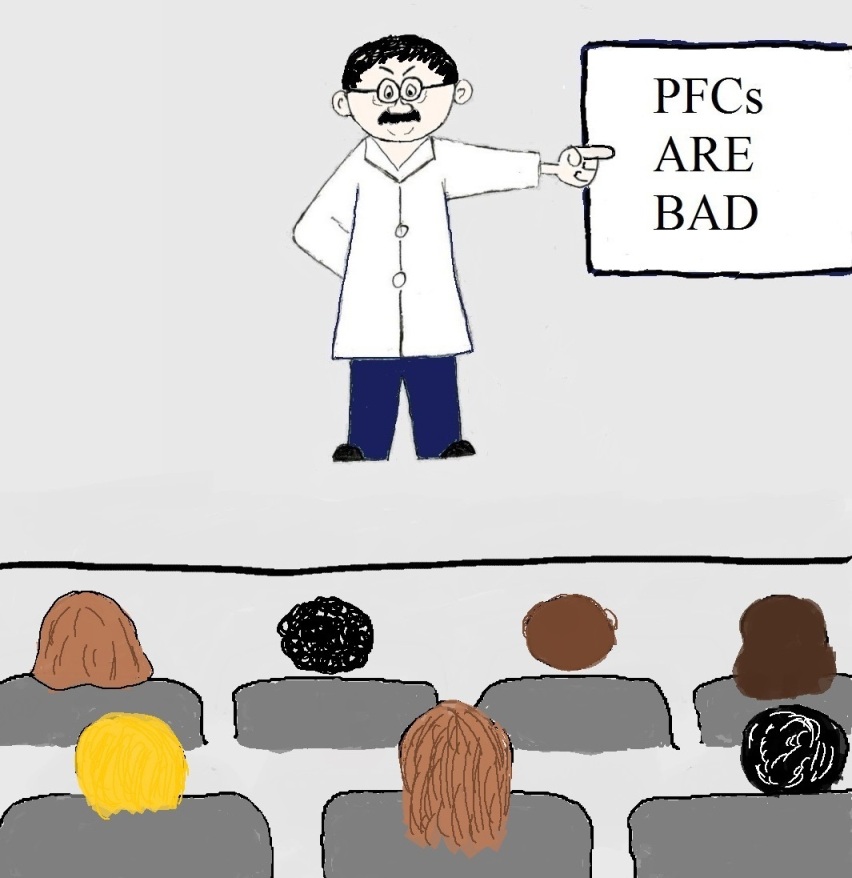- Home
- Toxic Chemicals & Health
- Causes of Obesity
Causes of Obesity
We are getting fatter. Approximately 39.6% of US adults were
characterized as obese in 2016 compared to 13.4% in 1980.
Even more alarming, obesity in kids has also been increasing. In 2016 18.5% of US children were obese compared to just 4% before 1980.
Experts on the subject have projected that by 2030, nearly one in two US adults will be obese, and nearly one in four will be severely obese.
In as many as 29 states, the prevalence of obesity will exceed 50%, with no state having less than 35% of residents who are obese.
This is serious because obesity is inked to many health problems. It increases your risk of developing diabetes, cancer, chronic inflammation and heart disease.
The Causes of Obesity
So, what’s the reason for this obesity epidemic? What are the causes of obesity? Here are three well known causes of obesity and one that will surprise you.
1. Calories in Versus Calories Out
When you take in more calories than your body needs for everyday activities and functions, your body stores the rest. This leads to weight gain.
This energy imbalance has increased over the past 20 years because we are less active (energy out). We are also taking in more calories (energy in) because we’re eating more calorie dense foods like processed foods and take-out.
2. It’s in Your Genes
Some people believe they are genetically programmed to be obese. Fortunately, that’s rarely the case.
Although genetics is widely believed to be associated with obesity, genes can only explain 2.7% of an individual’s weight issues.
So, the two most commonly given explanations - energy balance and genetics - cannot fully explain the shocking increases in obesity observed in the US and worldwide.
3. It’s in Your Gut
In the past several decades there’s been a lot of interest and research in the role your gut plays in your health. Specifically, your gut bacteria, a.k.a gut microbiome composition. So, it’s now well-established that obesity is associated with the composition of your gut microbiome.
This research has also found that there are numerous things that can mess with your gut microbiome. For example, the typical “Western Diet” of highly processed, calorie dense foods and fatty meats is messing with your gut.
And so is exposure to some toxic chemicals like arsenic and mercury. The changes caused by this exposure might increase your risk for obesity.
4. Exposure To Obesogens
Researchers are now examining the role that toxic chemicals plays in the world’s obesity problem. The fourth cause of obesity, called The Obesogen Hypothesis, proposes that environmental chemicals, termed “obesogens,” promote obesity.
This fourth cause of obesity impacts the other three.
Calories In/Calories Out - Because of obesogen exposure we eat more, metabolize calories less efficiently, shift energy balance to favor calorie storage and increase the size and number of your fat cells. Obesogen exposure can also change the amount of food needed to increase weight or the amount of exercise needed to lose weight.
Your Genes - Some obesogenic effects are linked to adulthood exposures. But there is a rapidly growing body of evidence that suggests the toxins you were exposed to as a baby and a child will cause you to be overweight as an adult.
You can essentially be reprogrammed by obesogens to have a slower metabolism, more or larger fat cells and more abdominal fat as an adult. Even low-level exposure during fetal development and infancy may cause irreversible effects in adulthood.
And these changes can be passed to future generations, making them more susceptible to obesity.
Your Gut - Many known obesogens, like BPA and two common dietary emulsifiers, carboxylmethylcellulose and P-80, can and do change your gut microbiome. The information available indicates that they can change the types, number and function of bacteria in your gut.
These microbiome changes can alter metabolic activity and liver function, increase inflammation in your intestine and inhibit the functioning of a key regulator of fat and glucose metabolism.
Your Endocrine System and Obesogen Exposure
Scientists who study obesogens believe obesogen exposure is an under-recognized and understudied cause of obesity.
This makes sense because nearly every aspect of appetite control, metabolism and fat storage is regulated by the endocrine system. Many endocrine organs and hormones work together to regulate metabolism and body weight.
And many obesogens can interfere with normal endocrine regulation because they are endocrine disrupting chemicals (EDCs).
Plus, guess where EDCs love to hang out in your body? That’s right – EDCs are fat loving chemicals that ‘prefer’ to be stored in your body fat.
Since fat cells act much like an endocrine organ, releasing hormones related to your appetite and metabolism, they are prime targets for endocrine disrupting toxins.
Bottom Line - Obesogens are thought to cause obesity by:
- Increasing the number of fat cells in your body.
- Increasing the size of your fat cells by programming fat cells to store more fat.
- Affecting how your body metabolizes fat.
- Affecting the hormones that influence your appetite, food preferences and energy metabolism
- Disrupting your gut bacteria (microbiome).
- Causing epigenetic changes (modifications to DNA) that are passed to future generations. making them more susceptible to obesity.
Obesogen Toxins
In the EPA Toxicity Reference data base (ToxRefDB) there are approximately 100 chemicals linked to increased body weight and/or increased blood glucose, and pancreatic effects. The following chemicals have received a lot of attention as obesogens.
Keep in mind, much of what is known about obesogens comes from animal studies. Plus, this is a new field with lots of unknowns. But the evidence is mounting.
New human studies are being done. And new suspected obesogens are continually being discovered. Here are some of the more common and well-studied ones.
|
BPA, BPS and BPF |
Bisphenol A, or BPA is used to make plastics. It is also used to make epoxy coatings that line food and beverage cans. If you’re thinking, I’ll just switch to BPA-free products, that won’t help. Two structurally similar substitutes, bisphenol S (BPS) and bisphenol F (BPF), are even worse than BPA in increasing the number of fat cells. Plus, a newer longitudinal birth cohort study revealed that BPS and BPF were significantly associated with obesity in children (ages 6-19). |
|
Food Additives |
Commonly used food additives like the dietary emulsifiers carboxymethylcelluclose, P-80, Dioctyl sodium sulfosuccinate (DOSS) and Span-80 and the flavor enhancer monosodium glutamate (MSG) have been identified as obesogens. (P-80 and other dietary emulsifiers also mess with your gut bacteria). Another potential obesogen food additive is the widely used food preservative 3-tert-butyl-4-hydroxyanisole (3-BHA). The presence of food additives that promote obesity might help explain why eating highly processed food leads to greater weight gain than eating the same number of calories from fresh foods. |
|
PFAS |
PFASs are used to make stain-resistant and stick-resistant coatings for clothing, furniture, carpets, paper packaging, and cookware. Your exposed through food (especially meat and dairy), drinking water and household dust. PFASs are dubbed ‘Forever Chemicals’. These obesogens linger in your body fat, animal fat and the environment for a long time. An interesting 2018 clinical study found that people with the highest blood levels of PFAS had lower resting metabolic rates and regained weight faster after dieting than those with the lowest levels. |
|
Phthalates |
Phthalates are a group of chemicals used to soften and increase the flexibility of plastic and vinyl. They are also commonly found in food and beverage packaging, soaps, shampoos, cosmetics, and hairsprays. They are also used in any cleaning and skincare products with fragrance. Phthalates are easily released from these products you’re exposed through skin absorption, indoor air and house dust and ingestion. |
|
Pesticides |
Many pesticides have been linked to obesity in both animals and in humans. One example is DDT, which was banned in the 70’s but persists in the environment, and its major breakdown product DDE. Methoxychlor, the neonicotinoid insecticide imidacloprid, the herbicides glyphosate, found in RoundUp, and quizalofop-p-ethyl (QPE) have also been identified as candidate obesogens. You’re exposed to these pesticides as residues on nonorganic produce, in drinking water and when you use them in your home. Roundup is the most widely used herbicide in both agriculture and home use. |
|
Organotins |
Tributyltin (TBT), one of the most well studied obesogens, contaminates seafood. Dibutyltin (DBT) is more common in the environment than TBT because it makes up to 3% of polyvinyl chloride (PVC) plastics. DBT has been found to leach into drinking water from PVC pipes. Organotins like monobutyltin (MBT) and TBT are found in high levels in house dust. Triphenyltin (TPT) is used as a fungicide and miticide on potatoes, beets and celery. |
Protecting Your Health
Maintaining a healthy weight can be tough. Exposure to obesogens is making it even tougher. Since obesity leads to many health issues, reducing your obesogen exposure in addition to eating a healthy diet and getting lots of exercise is an effective healthy weight combo.
In the article Obesogens, An Environmental Link to Obesity (EHP 2012) Dr Blumberg, who coined the term obesogen, stated that he believes “the effects of early-life exposure are irreversible, and those people will fight a life-long battle of the bulge. However, if such people reduce their exposure to obesogens, they will also reduce health effects that may arise from ongoing adulthood exposures.”
You can reduce your exposure to obesogens by:
- Filtering your drinking water
- Switching to organic produce
- Reducing the high fat foods in your diet
- Using only natural pesticides
- Reducing the plastic and canned goods in your life
- Avoiding stain-resistant and stick-resistant coatings
- Eating more whole foods, less processed foods
For the best ways to protect yourself and your family from the toxic chemicals that make you fat check out my ebook Sabatoging Skinny and Dr. Blumberg's new book The Obesogen Effect.
Other Posts You May Like
 How To Detox Your Body Part II How To Detox Your Body Part II |










